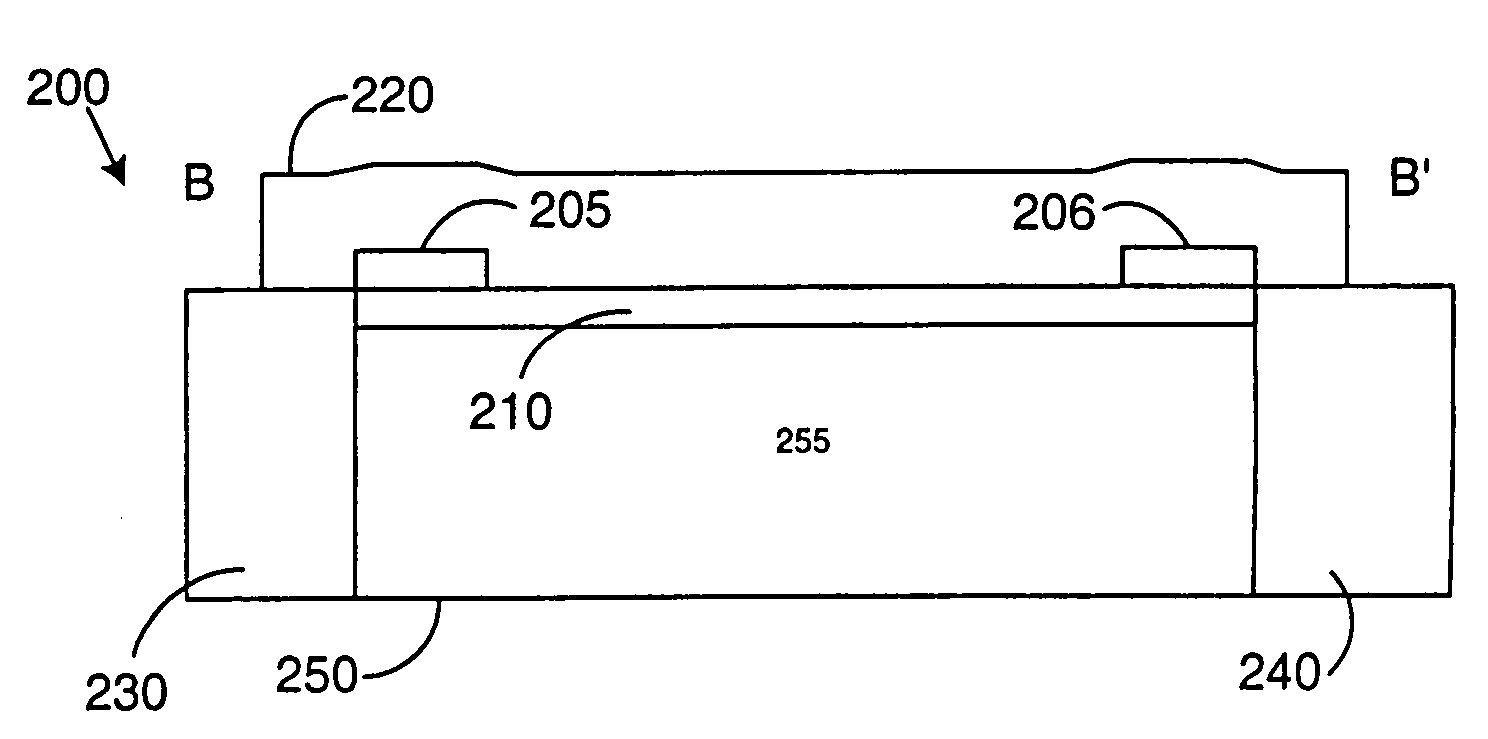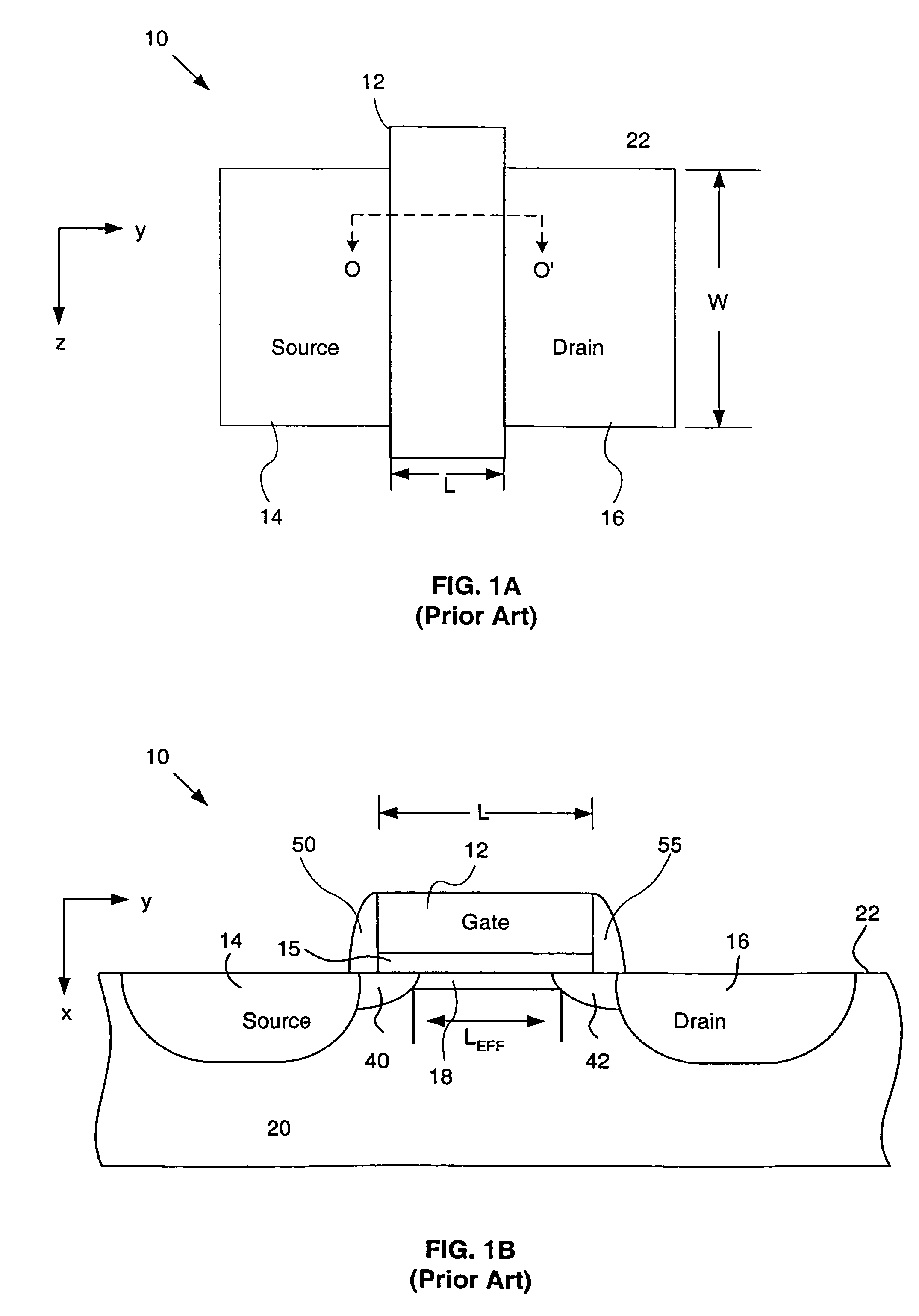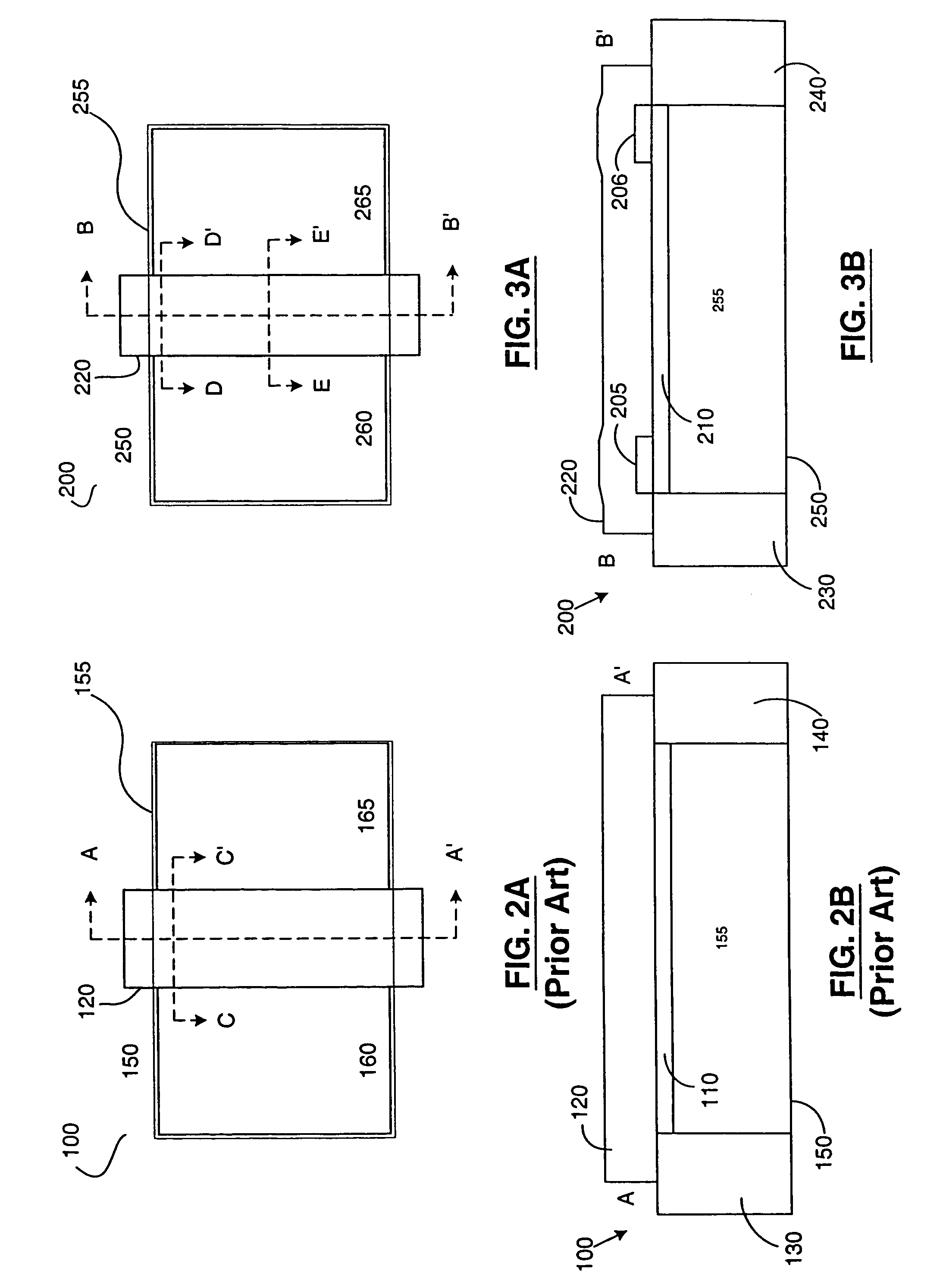Dual-oxide transistors for the improvement of reliability and off-state leakage
a dual-oxide transistor and transistor technology, applied in the direction of transistors, semiconductor devices, electrical equipment, etc., can solve the problems of excessive forward and reverse gate leakage current, off-state leakage current, and small amount of unwanted leakage current, so as to reduce leakage current, minimize leakage current, and reduce the effect of leakage curren
- Summary
- Abstract
- Description
- Claims
- Application Information
AI Technical Summary
Benefits of technology
Problems solved by technology
Method used
Image
Examples
Embodiment Construction
[0024]The figures referred to hereafter are for illustrative purposes and are not to scale or to conform in shape with real devices. FIGS. 2A-D depict a conventional MOSFET device 100. Referring to FIG. 2A, which shows a top view of device 100, device 100 comprises a gate 120 between two diffusion regions, i.e., source 160 and drain 165, in an active region 155 in a semiconductor (such as silicon) substrate 150. Gate 120 is typically formed of polysilicon or metal. Source 160 and drain 165 can be either p-type or n-type diffusion regions in substrate 150.
[0025]FIG. 2B depicts device 100 in vertical cross-section along lines A-A′ in FIG. 2A. As shown in FIG. 2B, gate 120 is on top of a gate oxide layer 110 that is formed on the substrate 150. Regions 130 and 140 represent isolation regions created, for example, by shallow trench isolation (STI) manufacturing techniques.
[0026]FIG. 2C depicts device 100 in vertical cross-section along lines C-C′ in FIG. 2A. As shown in FIG. 2C, device ...
PUM
 Login to View More
Login to View More Abstract
Description
Claims
Application Information
 Login to View More
Login to View More - R&D
- Intellectual Property
- Life Sciences
- Materials
- Tech Scout
- Unparalleled Data Quality
- Higher Quality Content
- 60% Fewer Hallucinations
Browse by: Latest US Patents, China's latest patents, Technical Efficacy Thesaurus, Application Domain, Technology Topic, Popular Technical Reports.
© 2025 PatSnap. All rights reserved.Legal|Privacy policy|Modern Slavery Act Transparency Statement|Sitemap|About US| Contact US: help@patsnap.com



